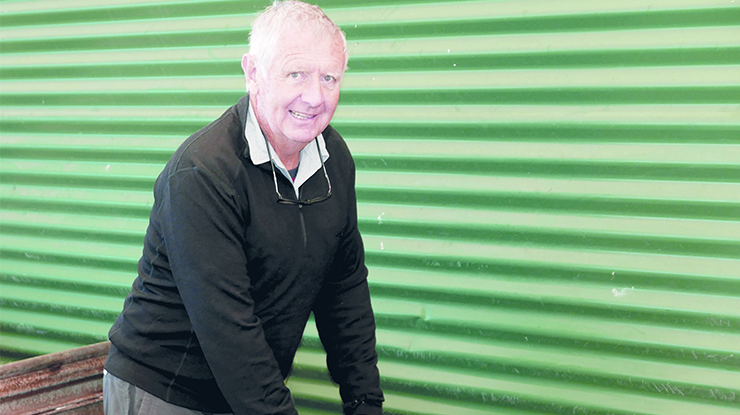Control lice with surveillance and ‘social distancing’
23 July 2020
 Tasmanian livestock consultant and veterinarian Paul Nilon.
Tasmanian livestock consultant and veterinarian Paul Nilon.
Lice are a costly problem for sheep producers but they can be controlled through regular surveillance and good farm biosecurity.
While the biggest impact of sheep lice is fleece damage in Merinos, Tasmanian livestock consultant and former ParaBoss* Technical Committee member Paul Nilon said lousy flocks face control costs and reduced marketing options, regardless of breed.
“Lice infestation can easily reduce fleece weights by up to one kilogram, but the critical thing is the fleece derangement caused by rubbing and pulling,” Paul said.
“This destroys the value of your clip – it may well be halved if lice are left unchecked.
“There’s also the impact on your trading options. No one wants to buy lousy sheep.”
In rare cases, lice infestations can be so extreme they affect animal health and welfare.
Manage contact
Social distancing isn’t just important during global pandemics – almost all new lice infestations begin from contact with infested sheep, so it’s a good place to start to prevent lice.
“If you want to be lice‑free, you need a good lice biosecurity plan which prevents contact with infested sheep,” Paul said.
Producers who can’t realistically aim to be lice‑free – for example, lamb traders and producers with large bush blocks where it’s hard to get a clean muster – should aim for proactive surveillance and have a plan to manage incursions.
Paul recommends only treating for lice if they’ve been detected (with some exceptions for high‑risk situations).
Treating after every shearing, even if sheep don’t have any signs of infestation, is an unnecessary expense and creates a false sense of security as residual protection provided by most lice treatments is only a matter of weeks.
“Treating speculatively doesn’t replace the need for strict, ongoing surveillance,” he said.
“It also unnecessarily increases chemical residues in your wool, which may limit marketing options, and may contribute to pesticide resistance.”
Six steps to a lice‑free flockHere are six practical tips to prevent and manage lice:
|
*ParaBoss is a not‑for‑profit organisation, funded by MLA and Australian Wool Innovation and coordinated by the University of New England with industry oversight. ParaBoss coordinates WormBoss, FlyBoss and LiceBoss.


